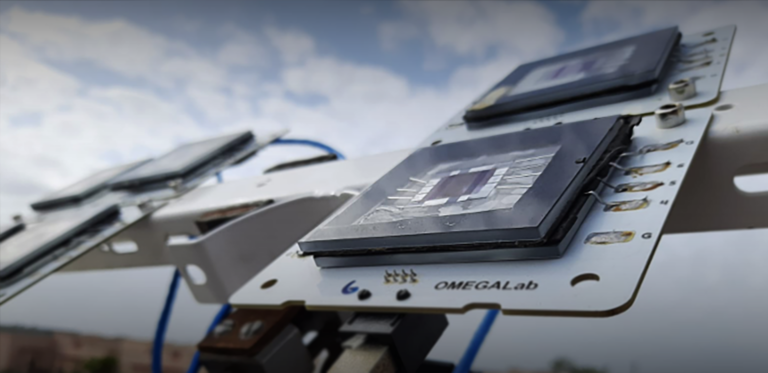Material Science and Engineering
Neat and complete nanoparticles ready for use
Replacing the organic molecules surrounding atomically precise silver nanoparticles prepares them for practical applications.


In the new, faster process more than 94 percent of the ligands are exchanged, and importantly, the number of silver atoms in the Ag44 nanoparticles remains unaffected.
© KAUST
Atomically precise noble metal nanoparticles show great potential for a broad range of applications, including catalysis and solar cells. Researchers from KAUST have developed a rapid method to smooth the nanoparticle surface to increase their practical appeal.
Currently the organic molecules that cover the surface of the nanoparticles are not chemically suitable for applications, which results in the nanoparticles being difficult to process. Osman Bakr and colleagues from KAUST’s Solar and Photovoltaics Engineering Research Center were able to replace the outer organic molecules of silver nanoparticles to produce smooth films ready for applications1.
Among atomically precise noble metal nanoparticles, a useful class are the Ag44 nanocrystals, comprising exactly 44 atoms of silver. Because their structure is known down to a single atom, the properties of these nanoparticles can be easily modelled by computers. For example, their strong light absorption across a broad range of optical wavelengths makes these particles advantageous for photovoltaic applications.
Despite such attractive properties, the chemical process used to synthesize these nanoparticles covers the silver core with a protective layer of organic molecules, known as thiolate ligands. The thiolates stabilize the nanoparticles, but also hinder their solubility, thwarting the organic solvent process needed to assemble them into thin films.
Ideally the thiolates should be replaced by other stabilizing ligands but this, notes Bakr, has proven very difficult. “All previous attempts of ligands exchange led to either the disassociation of the nanoparticles or their growth into other sizes.”
KAUST researchers developed a process by which ligands are exchanged by a chemical reaction requiring less than 30 seconds. It’s a much faster process than comparable ligand exchange procedures known for gold nanoparticles, which typically require more than 12 hours. More than 94 percent of the ligands are exchanged, and importantly, the number of silver atoms in the Ag44 nanoparticles remains unaffected.
Moreover, the process occurs in solution and is easily scalable to high volumes. The team could also demonstrate the exchange of the original ligands by a number of different thiolates.
The new ligands significantly improve the processing of the nanoparticles and fabricating thin films from a solution of nanoparticles creates a very smooth surface which is ideal for use in applications. Bakr says that his next aim is to follow up on this potential and, “to explore the utility of atomically precise silver nanoparticles in photovoltaics and other optoelectronic devices.”.
References
- AbdulHalim, L.G., Kothalawala, N., Sinatra, L., Dass, A. & Bakr, O.M. Neat and complete: thiolate-ligand exchange on a silver molecular nanoparticle. Journal of the American Chemical Society. 136, 15865-15868 (2014).| article
You might also like

Material Science and Engineering
Electron movie guides design of layered perovskite materials

Material Science and Engineering
Remote region sensor for essential vitamin deficiency

Material Science and Engineering
Low-power hydrogen sensor detects leaks in an instant

Material Science and Engineering
Illuminating pathways to long-lived organic solar cells

Chemistry
Beating the dark current for safer X-ray imaging

Chemical Engineering
Net benefits for advanced materials design

Material Science and Engineering
Atom-thin insulator grown into perfect films

Material Science and Engineering



